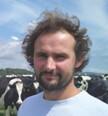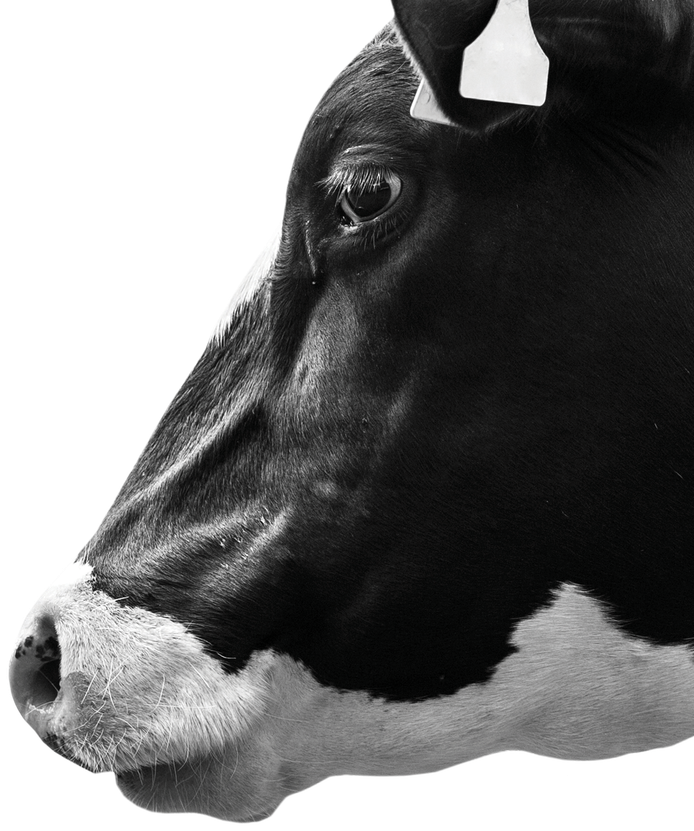
Genomic-tested herds ‘stride out’
Genomic testing heifers is an investment, not a cost, for dairy businesses, and can add real value to the herd – as one Dorset-based producer is finding out. We spoke to him to find out more.

Genetic testing females to identify the best animals to breed replacement heifers from. And it is proving to be a game-changer in UK dairy herds, according to NMR’s genomic manager Richard Miller. “The added reliability that comes with a genomic test, which is at least double that of the traditional parent averages, boosts the progress from one generation to the next – particularly where the information is used to rank heifers and breed the best to sexed semen,” he says.
“The gap between those using genomics and the rest will continue to widen.”
And even more so now new indices, such as Feed Advantage, will be included only in genomic testing and not as part of traditional testing systems.
An estimated 20% of milk-recorded herds are now genomically testing females, and this number is rising steadily month-on-month, according to AHDB’s Marco Winters.
So while some reports suggest more than a third of producers don’t understand or don’t see a role for genomics in their herds, it seems many do, and they are taking advantage of the faster rate of genetic progress in their herds.
“It’s impossible to say how much of the recent genetic progress we’ve seen in the national dairy herd is down to genomics, sexed semen or improvements in sires,” says Mr Winters. “But there’s no doubt all three have contributed to the progress.”
Top animals
Genomic testing will identify the top animals and, importantly, it will highlight those that don’t make the cut as dams of replacements. “The assumption is often made that the youngest are the best, but genomic-test results frequently show the bottom end are not good enough,” adds Mr Miller.
“This detail is even more relevant now more herds are using sexed semen. Although straws are about 30% more expensive, most herds can reduce dairy inseminations by 40% compared with using conventional semen. Using this only on the top end means producers can be confident they are maximising the opportunities for genetic progress.” The financial gain of using genomic test data for breeding females has been estimated at between £10,000 and £15,000 within 10 years for a 150-cow dairy herd, plus the additional income from more beef cross calves. And it is likely this improvement will increase as the genomic proofs include the latest indices. In August the new Feed Advantage index, developed by AHDB, will be incorporated into the genomic testing services, including NMR’s GeneEze.
AHDB will only publish this index for genomically tested females, and it will identify those animals using less feed for their production needs. It will also be an integral part of the new AHDB EnviroCow index.
Herd progress
Tom Percy introduced genomic testing into his family’s 120-cow Holstein herd in 2017, to coincide with upgrading to pedigree status. “We wanted to be sure we were using sexed semen on the best heifers, to improve our genetic status and add value to our herd. The lower- ranked heifers were then bred to beef bulls,” he says. “This adds value at the top and bottom end, with our beef cross calves or stores adding another income stream.” Tissue samples are taken from calves soon after birth for BVD and genomic testing in the all-year-round calving herd, which is based at West Orchard Farm, near Wareham in Dorset.
For the past few years, they’ve reared all the heifers and used AHDB’s gPLI to decide which to breed to dairy. “This is because we’ve needed more replacements as we’ve been battling with bTB and Johne’s disease.
“But we’re getting on top of these and, in future, we’ll look to produce about 50 dairy heifers and keep about half as replacements and sell the surplus,” adds Tom. And with the genetic progress seen during the past three years, Tom knows he’ll have top-quality heifers for sale. The first crop of calves born from genomic tested heifers in 2019 had a gPLI ranging from -135 up to 531. This year, in 2021, the range is from a gPLI of 294 up to a gPLI of 598. “And what is interesting is the gap between the ‘best’ and the ‘worst’ is now much narrower – just 304 points of gPLI compared with 547 in 2017. So it’s getting tricky to pick the lower-end heifers and cows to serve to beef by using the gPLI figure alone. I’m now using more of the in-depth proof data and matching sires more precisely, keeping an eye on milk quality and other factors that are important for our milk buyer Arla.”
The herd’s current average yield is 8,700kg of milk, at 4.5% fat and 3.5% protein, on a summer grazing and winter housing system. Before genomic testing, heifers averaged around 6,000kg in their first lactation. This is now closer to 7,500kg, which Tom says is a huge improvement. “Our initial aims of improving PLI and yields without compromising on milk quality are being met.”
He is targeting yields of 9,500kg while maintaining the same milk quality, which he hopes to achieve through improved genetic potential of his herd and taking advantage of the traits included in the genomic proofs, such as new Feed Advantage index. “We want cows to be higher yielding and more efficient.”
Eye-opening results
Tom says genomic testing has been a real eye-opener. “You can’t tell how good a heifer is by looking at her. She may appear to be a cracking animal and classify well, but when you get her in the parlour she just doesn’t come up with the goods. Then you look at her genomic test results and it all makes sense.
“It’s been interesting to see how accurately the genomic tests stack up. Our heifers have done just what the proof said they would. The increased reliability compared with the old parent averages is pretty easy to see.”
The ease of genomic testing – and the relatively small cost – means it’s a management tool that’s here to stay at West Orchard Farm.
“It’s not cheap to rear heifers, so we need to know we’re rearing the right ones for our herd.” A genomic test is a small price to pay in comparison.
This article first appeared in the September 2021 issue of Cow Management
